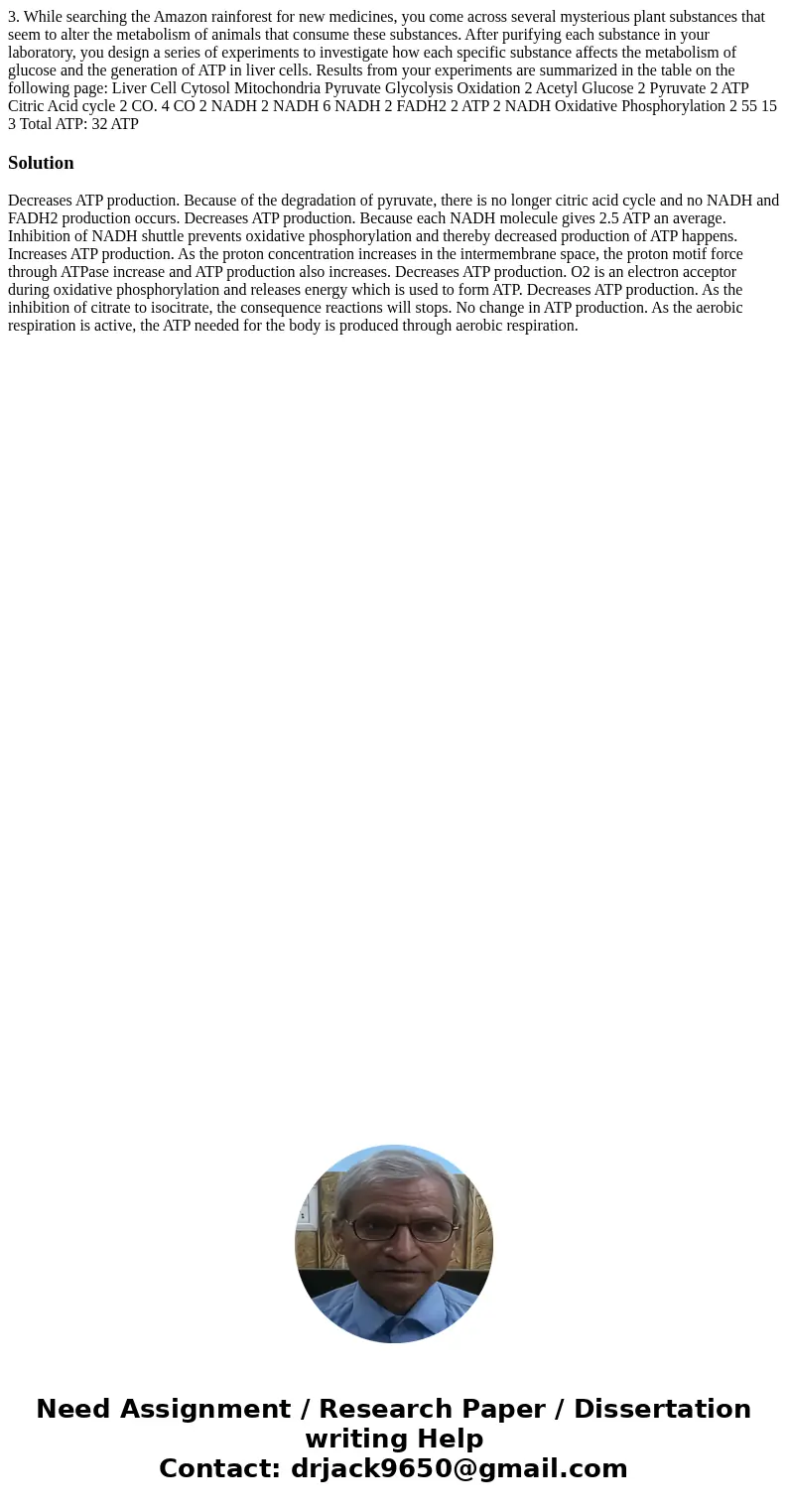3 While searching the Amazon rainforest for new medicines yo
3. While searching the Amazon rainforest for new medicines, you come across several mysterious plant substances that seem to alter the metabolism of animals that consume these substances. After purifying each substance in your laboratory, you design a series of experiments to investigate how each specific substance affects the metabolism of glucose and the generation of ATP in liver cells. Results from your experiments are summarized in the table on the following page: Liver Cell Cytosol Mitochondria Pyruvate Glycolysis Oxidation 2 Acetyl Glucose 2 Pyruvate 2 ATP Citric Acid cycle 2 CO. 4 CO 2 NADH 2 NADH 6 NADH 2 FADH2 2 ATP 2 NADH Oxidative Phosphorylation 2 55 15 3 Total ATP: 32 ATP 
Solution
Decreases ATP production. Because of the degradation of pyruvate, there is no longer citric acid cycle and no NADH and FADH2 production occurs. Decreases ATP production. Because each NADH molecule gives 2.5 ATP an average. Inhibition of NADH shuttle prevents oxidative phosphorylation and thereby decreased production of ATP happens. Increases ATP production. As the proton concentration increases in the intermembrane space, the proton motif force through ATPase increase and ATP production also increases. Decreases ATP production. O2 is an electron acceptor during oxidative phosphorylation and releases energy which is used to form ATP. Decreases ATP production. As the inhibition of citrate to isocitrate, the consequence reactions will stops. No change in ATP production. As the aerobic respiration is active, the ATP needed for the body is produced through aerobic respiration.
 Homework Sourse
Homework Sourse